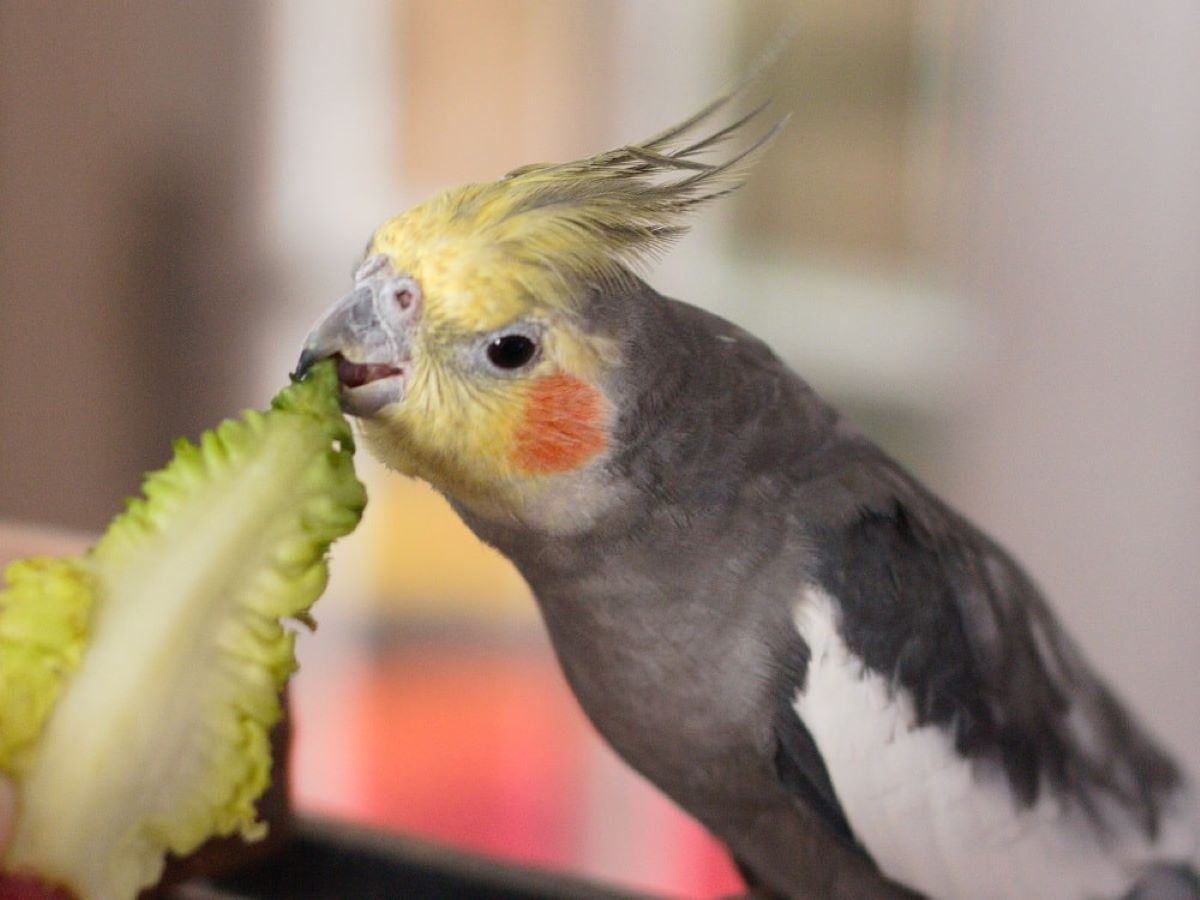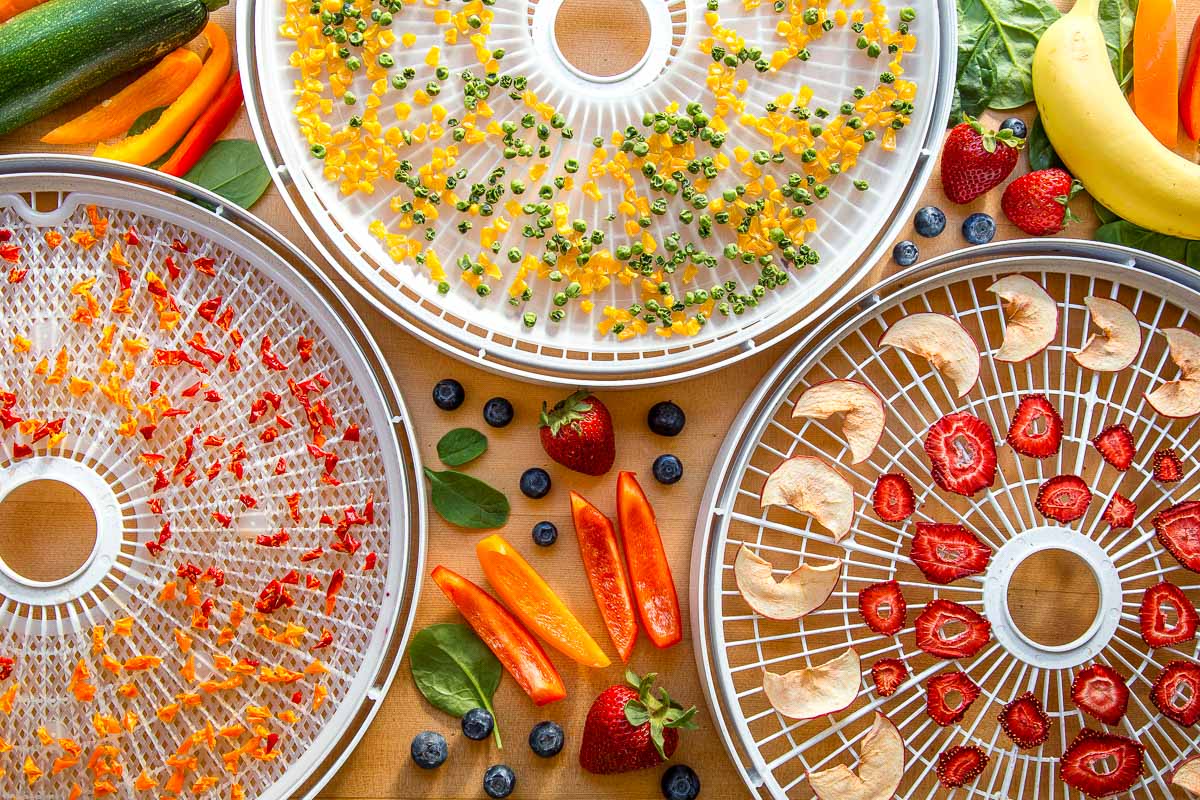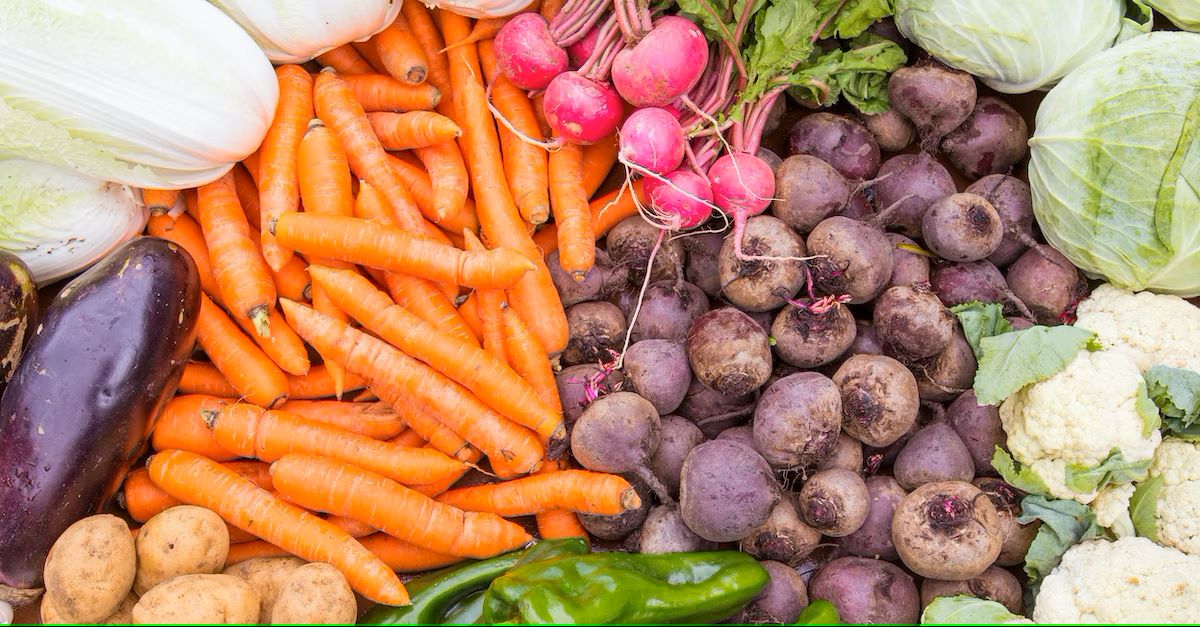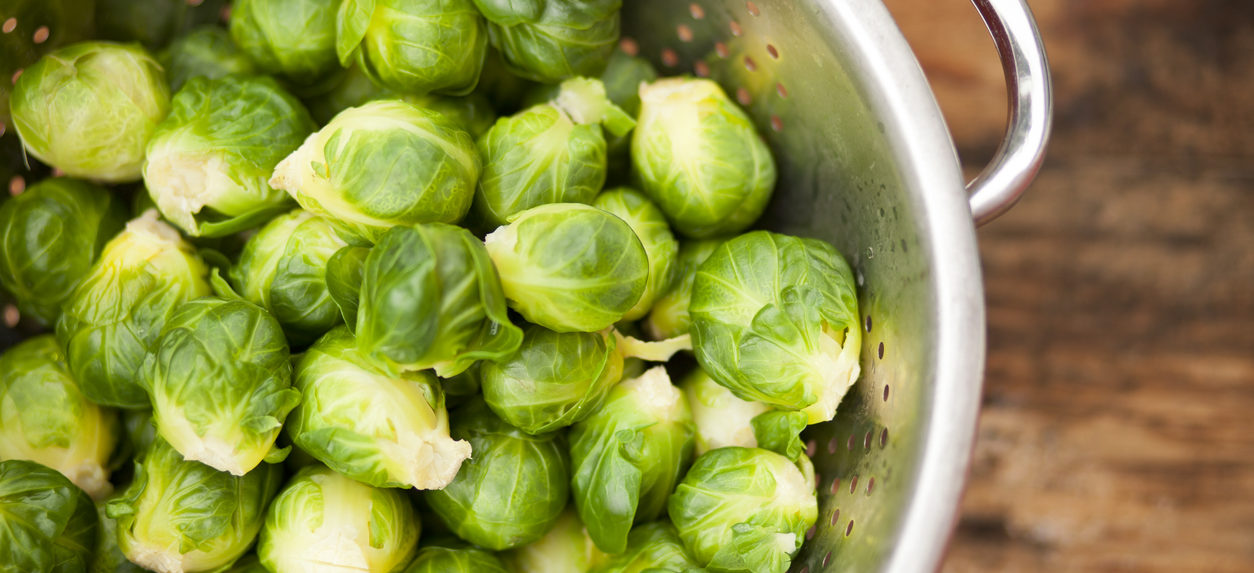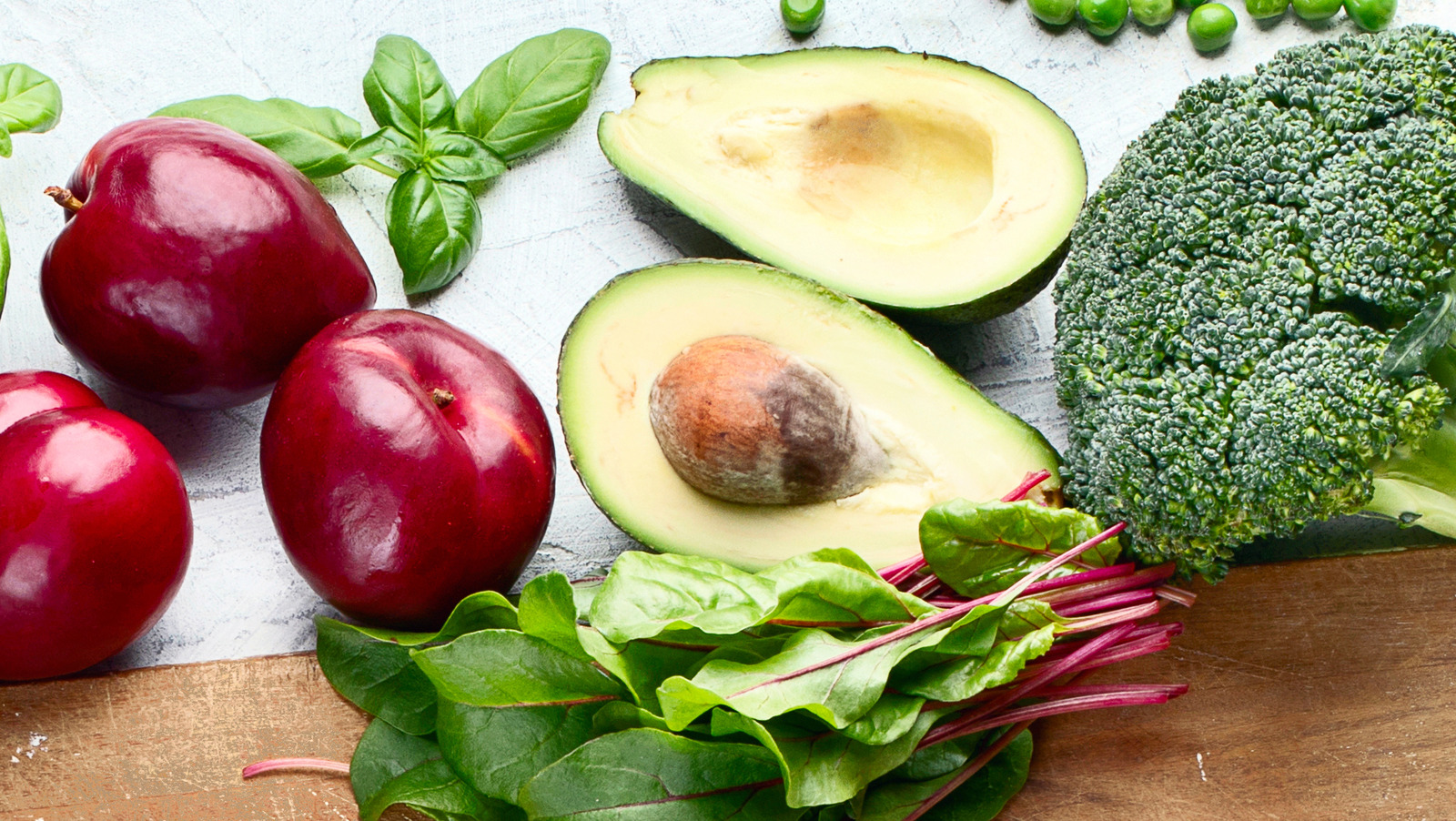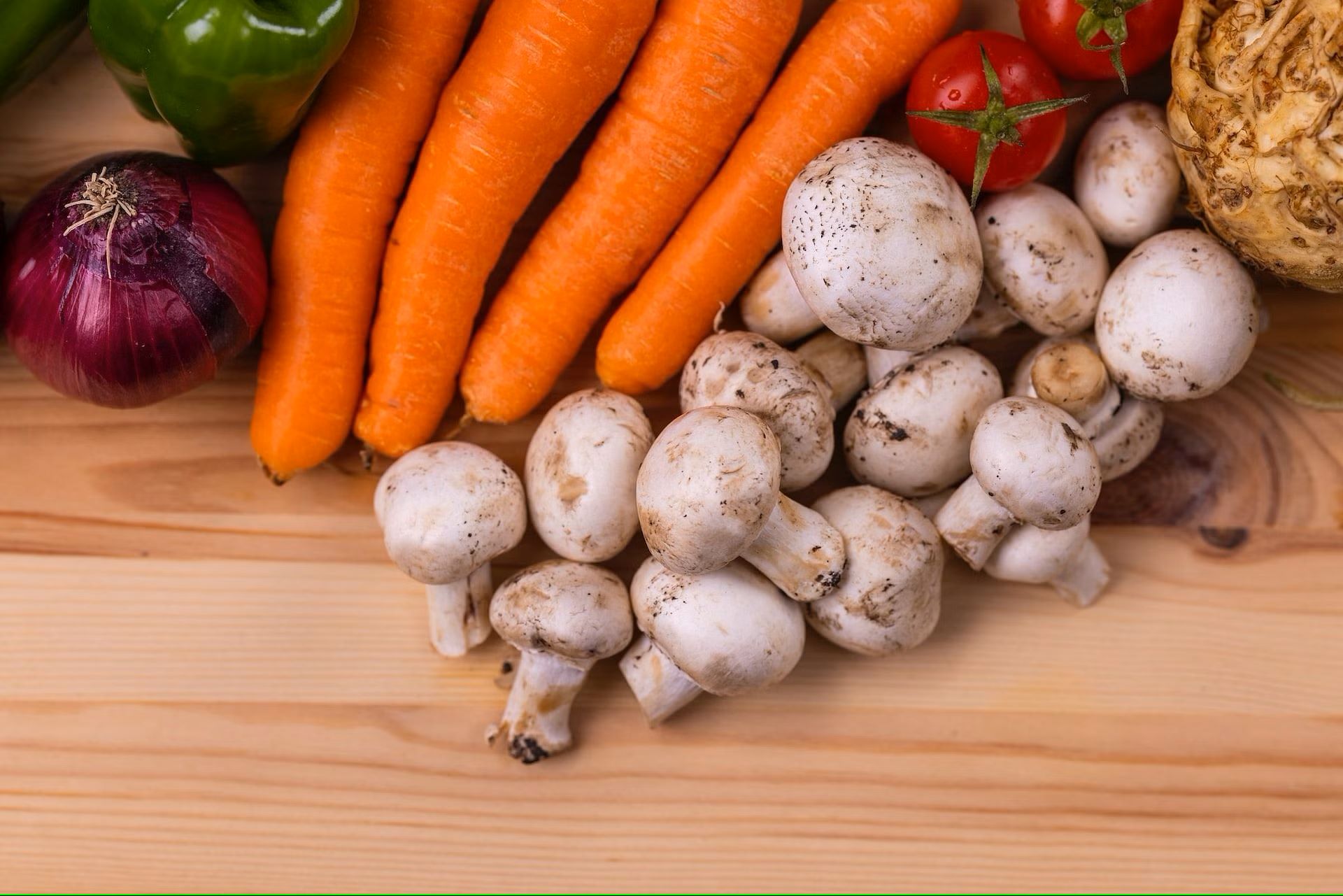Home>Gardening News and Trends>Latest News>What Vegetables Can Guinea Pigs Have


Latest News
What Vegetables Can Guinea Pigs Have
Modified: January 22, 2024
Discover the latest news on what vegetables are safe for guinea pigs to eat. Keep your furry friend healthy with a balanced diet packed with nutritious greens.
(Many of the links in this article redirect to a specific reviewed product. Your purchase of these products through affiliate links helps to generate commission for Chicagolandgardening.com, at no extra cost. Learn more)
Table of Contents
Introduction
Guinea pigs are adorable and furry pets known for their distinctive personalities. If you are a guinea pig owner, you want to ensure that your little companion stays healthy and happy. A vital aspect of their well-being is providing them with a balanced diet that includes a variety of vegetables.
While guinea pigs primarily thrive on hay and pellets, incorporating vegetables into their diet adds essential nutrients and helps keep their digestive system healthy. However, it’s important to note that not all vegetables are safe for guinea pigs to consume. Some may be toxic or cause digestive issues.
In this article, we will explore a wide range of vegetables that are safe and healthy for your guinea pig to enjoy. We will discuss the benefits of each vegetable and how you can incorporate them into your pet’s diet. Remember, moderation is key, and each vegetable should be introduced gradually to ensure your guinea pig’s digestive system can handle it.
Before we dive into the specific vegetables, it’s worth mentioning that a guinea pig’s diet should consist mainly of leafy greens. These should make up around 75% of their vegetable intake. The remaining 25% can include other vegetables, focusing on a variety of colors and textures to ensure a well-rounded diet.
So, let’s explore the world of vegetables and discover which ones are suitable and beneficial for your guinea pig!
Leafy Greens
Leafy greens are an essential part of a guinea pig’s diet. They are low in calories and high in fiber, which helps with digestion and prevents obesity. These greens are also a great source of vitamin C, an essential nutrient for guinea pigs since they cannot produce it themselves.
Here are some leafy greens that you can feed your guinea pig:
- Lettuce: Opt for darker lettuce varieties such as romaine, green leaf, or red leaf. Iceberg lettuce should be avoided as it has lower nutritional value.
- Spinach: A delicious and nutritious treat for your guinea pig. However, it should be fed in moderation as it contains a high amount of calcium.
- Kale: Rich in vitamins A, C, and K, kale is a nutrient powerhouse for guinea pigs. Introduce it gradually to avoid digestive issues.
- Chard: A colorful choice packed with antioxidants, chard is an excellent addition to your guinea pig’s diet. Ensure you remove the stems, as they can be tough to chew.
- Bok Choy: Also known as Chinese cabbage, bok choy is a crispy and refreshing green that provides essential vitamins and minerals.
Remember to wash the leafy greens thoroughly before serving them to your guinea pig. It’s best to offer a variety of greens to provide a balanced mix of nutrients. Introduce new leafy greens gradually to ensure your guinea pig tolerates them well.
Leafy greens should be given daily, making up the majority of your guinea pig’s vegetable intake. However, it’s essential to monitor your pet’s response to each type of green. If you notice any digestive issues or changes in their stool, consult a veterinarian for further guidance.
Now that we have covered leafy greens, let’s move on to the next category of vegetables: root vegetables.
Root Vegetables
Root vegetables offer a tasty and nutritious addition to your guinea pig’s diet. They are rich in vitamins, minerals, and fiber, making them a great choice for promoting a healthy digestive system. However, it’s important to note that root vegetables should be given in moderation due to their higher sugar content compared to leafy greens.
Here are some root vegetables that you can safely feed your guinea pig:
- Carrots: Carrots are a classic vegetable loved by many guinea pigs. They are an excellent source of vitamin A, promoting healthy eyesight. Remember to feed them in small portions due to their natural sugar content.
- Parsnips: Another root vegetable that guinea pigs can enjoy is parsnips. They provide a good amount of fiber and vitamin C. Introduce them gradually to your guinea pig’s diet.
- Turnips: Turnips are packed with nutrients, including vitamin C, calcium, and potassium. They can be served raw or cooked, but ensure they are cut into small, bite-sized pieces.
- Radishes: Radishes offer a crisp and tangy flavor while providing vitamin C and fiber. Consider offering them to your guinea pig in moderation due to their slightly spicy taste.
When feeding root vegetables, it’s essential to wash them thoroughly and remove any dirt or debris. Cut them into small pieces to prevent choking hazards. Remember to balance root vegetables with leafy greens to maintain a well-rounded diet for your guinea pig.
Now that we have explored root vegetables, let’s move on to the next category: cruciferous vegetables.
Cruciferous Vegetables
Cruciferous vegetables are another great addition to your guinea pig’s diet. These vegetables belong to the Brassicaceae family and are loaded with vitamins, minerals, and antioxidants that can support your pet’s overall health. However, cruciferous vegetables should be introduced gradually to avoid digestive issues, as some guinea pigs may be more sensitive to them.
Here are some cruciferous vegetables that you can safely include in your guinea pig’s menu:
- Broccoli: Broccoli is a nutrient-rich vegetable that provides vitamin C, vitamin K, and fiber. Serve it in small florets, avoiding the tougher stalks.
- Cauliflower: Cauliflower offers a mild and slightly sweet flavor. It is a good source of vitamin C and fiber. Like broccoli, serve it in small florets.
- Brussels Sprouts: These mini-cabbages are packed with vitamins and minerals, including vitamin C and folate. Ensure they are cooked and served in moderation, as they can cause gas in some guinea pigs.
- Cabbage: Cabbage is a leafy cruciferous vegetable that can provide some variety in your guinea pig’s diet. Opt for green cabbage and serve it in small portions to prevent digestive upset.
As with all vegetables, make sure to wash cruciferous vegetables thoroughly and cut them into small, manageable pieces. Introduce them gradually to your guinea pig’s diet and monitor their response. If you notice any signs of digestive discomfort, consult with a veterinarian.
Now that we have covered cruciferous vegetables, let’s move on to the next category: bell peppers.
Bell Peppers
Bell peppers are a colorful and flavorful addition to your guinea pig’s diet. These crunchy vegetables are packed with vitamins and antioxidants, making them a healthy treat for your furry friend. Bell peppers come in different colors, including red, yellow, and green, each offering slightly different nutritional benefits.
Here are the reasons why you should include bell peppers in your guinea pig’s menu:
- Vitamin C: Bell peppers are an excellent source of vitamin C, which is essential for guinea pigs since they cannot produce it on their own. This vitamin supports their immune system and overall health.
- Vibrant Colors: The different colors of bell peppers indicate varying levels of antioxidants. Including a mix of colors in your guinea pig’s diet can help provide a range of beneficial nutrients.
- Low in Sugar: Bell peppers are relatively low in sugar compared to some other vegetables, making them a suitable choice for guinea pigs.
- Texture Variety: Guinea pigs appreciate the variety of textures that bell peppers offer. The crispness of the peppers adds some excitement to their mealtime.
When feeding bell peppers to your guinea pig, ensure they are cut into small, bite-sized pieces, removing the seeds and stems. Start by offering a small amount and observe your guinea pig’s response. If they enjoy it and tolerate it well, you can gradually increase the portion size.
Remember not to feed your guinea pig spicy or hot peppers, as they can cause digestive issues or discomfort. Stick to bell peppers for a safe and enjoyable treat.
Now that we have covered bell peppers, let’s move on to the next category: cucumber.
Cucumber
Cucumbers are a refreshing and hydrating vegetable that makes a great addition to your guinea pig’s diet. These low-calorie vegetables are primarily composed of water, making them an excellent choice for keeping your guinea pig hydrated during warm weather. Cucumbers also offer a variety of health benefits for your furry friend.
Here are the reasons why you should consider feeding cucumber to your guinea pig:
- Hydration: As mentioned earlier, cucumbers have a high water content, which helps keep your guinea pig hydrated, especially during hot summer days.
- Vitamin K: Cucumbers contain vitamin K, which plays an important role in blood clotting and bone health.
- Anti-inflammatory properties: Cucumbers have natural anti-inflammatory properties that can help reduce inflammation and promote overall well-being.
- Low in sugar: Cucumbers are low in natural sugars, making them a safe and healthy treat for your guinea pig.
When feeding cucumbers to your guinea pig, it’s important to wash them thoroughly and remove the skin if it appears waxy or has been treated with pesticides. Cut the cucumber into small, bite-sized pieces to prevent choking hazards. Start by introducing small amounts and monitor your guinea pig’s response to ensure they tolerate it well.
Remember that while cucumbers are a great addition to your guinea pig’s diet, they should not be the sole source of nutrition. It’s important to offer a variety of other vegetables to ensure a balanced and nutritious diet for your furry friend.
Now that we have covered cucumber, let’s move on to the next category: zucchini.
Zucchini
Zucchini is a versatile and nutritious vegetable that can be a great addition to your guinea pig’s diet. This summer squash is not only low in calories but also packed with essential vitamins and minerals, making it a healthy choice for your furry friend.
Here are the reasons why you should consider feeding zucchini to your guinea pig:
- Vitamin C: Zucchini is a good source of vitamin C, which is vital for guinea pigs since they cannot produce it on their own. This vitamin supports their immune system and helps maintain their overall health.
- Hydration: Zucchini is rich in water content, which helps keep your guinea pig hydrated, especially during hot weather.
- Fiber: The high fiber content in zucchini supports a healthy digestive system for your guinea pig and helps prevent digestive issues.
- Low in sugar: Zucchini is low in natural sugars, making it a safe and healthy option for your guinea pig’s diet.
When offering zucchini to your guinea pig, make sure to wash it thoroughly and cut it into small, manageable pieces. You can offer it raw or cooked, but avoid using any seasoning or oils. Start by introducing small amounts and observe how your guinea pig reacts to it. If they enjoy it and tolerate it well, you can gradually increase the portion size.
It’s important to note that every guinea pig is unique, and some may have dietary sensitivities. If you notice any digestive issues or changes in your guinea pig’s behavior after introducing zucchini or any other new food, consult a veterinarian for guidance.
Now that we have covered zucchini, let’s move on to the next category: tomatoes.
Tomatoes
Tomatoes are a delicious and juicy fruit that can be a healthy addition to your guinea pig’s diet. While they are often considered a vegetable, tomatoes are technically a fruit due to their seed-bearing structure. Rich in vitamins and antioxidants, tomatoes offer several health benefits for your furry friend.
Here are the reasons why you should consider feeding tomatoes to your guinea pig:
- Vitamin C: Tomatoes are an excellent source of vitamin C, an essential nutrient for guinea pigs. Vitamin C supports their immune system and helps maintain overall health.
- Lycopene: Tomatoes contain lycopene, a powerful antioxidant that may have various health benefits, including reducing the risk of certain diseases.
- Hydration: Tomatoes have a high water content, which can help keep your guinea pig hydrated, especially during hot weather.
- Fiber: The fiber content in tomatoes can assist in promoting healthy digestion for your guinea pig.
When offering tomatoes to your guinea pig, it’s important to remove the stem and any leaves, as they are not safe for consumption. Cut the tomato into small, bite-sized pieces to prevent choking hazards. It’s recommended to remove the seeds as well, as they can be a potential choking hazard or cause digestive issues.
While tomatoes provide numerous health benefits, they should be fed in moderation. This is because tomatoes contain natural sugars and are slightly acidic, which may cause digestive upset if consumed in large quantities. Start by offering small pieces and monitor your guinea pig’s response. If they enjoy it and tolerate it well, you can include tomatoes as an occasional treat in their diet.
If you are unsure about introducing tomatoes or any other new food to your guinea pig, consult with a veterinarian for personalized advice.
Now that we have covered tomatoes, let’s move on to the next category: carrots.
Carrots
Carrots are a popular and nutritious vegetable that can be a tasty addition to your guinea pig’s diet. These crunchy and vibrant root vegetables are not only delicious but also packed with essential vitamins and minerals that promote your furry friend’s overall health.
Here are the reasons why you should consider feeding carrots to your guinea pig:
- Vitamin A: Carrots are rich in beta-carotene, which is converted into vitamin A in the body. Vitamin A supports your guinea pig’s vision, growth, and immune system.
- Fiber: Carrots contain a good amount of fiber, which helps with digestion and promotes a healthy digestive system for your guinea pig.
- Antioxidants: Carrots are packed with antioxidants, such as vitamin C and lutein, which help protect cells from damage and support overall well-being.
- Crunchy Texture: Guinea pigs love the crunchiness of carrots, making them a tasty and enjoyable treat.
When offering carrots to your guinea pig, make sure to wash them thoroughly and remove the leafy tops, as they are not safe for consumption. Cut the carrot into small, bite-sized pieces to prevent choking hazards. While carrots are safe for your guinea pig to eat, it’s important not to overfeed them due to their higher sugar content compared to other vegetables.
Additionally, keep in mind that carrots should be given as part of a balanced diet and not as a sole source of nutrition. It’s crucial to provide a variety of other vegetables to ensure your guinea pig receives a well-rounded and nutritious diet.
If your guinea pig has any special dietary needs or if you have concerns about their diet, it’s always a good idea to consult with a veterinarian for personalized advice.
Now that we have covered carrots, let’s move on to the next category: corn.
Corn
Corn is a popular staple in many human diets, but can guinea pigs have corn too? The answer is yes, but with some considerations. Corn can be included in your guinea pig’s diet in moderation, as it provides certain nutritional benefits.
Here are the reasons why corn can be part of your guinea pig’s diet:
- Source of Energy: Corn is relatively high in carbohydrates, providing a quick source of energy for your guinea pig.
- Fiber Content: Corn contains fiber, which aids in digestion and helps prevent constipation in guinea pigs.
- Vitamin B: Corn is a good source of certain B vitamins, such as thiamine and folate, which are important for overall health.
- Tasty Treat: Guinea pigs often enjoy the taste and texture of corn, making it a satisfying treat for them.
When feeding corn to your guinea pig, it’s important to follow these guidelines:
- Moderation: Due to its higher carbohydrate content, corn should be given in moderation. Too much corn can lead to weight gain and other health issues.
- Preparation: Fresh or frozen corn kernels can be offered to your guinea pig. It’s important to avoid feeding them canned or processed corn, as it may contain added salts or sugars.
- Small Portions: Cut the corn kernels into small pieces to prevent choking hazards. Offer a small amount and observe how your guinea pig responds to it.
While corn can be included as an occasional treat, it should not replace other essential vegetables in your guinea pig’s diet. It’s crucial to provide a variety of vegetables to ensure they receive a well-balanced and nutritious diet.
If your guinea pig has any special dietary needs or if you have concerns about their diet, it’s always best to consult with a veterinarian for personalized advice and recommendations.
Now that we have covered corn, let’s move on to the next category: peas.
Peas
Peas are a delicious and nutritious vegetable that can be a great addition to your guinea pig’s diet. These small, round green gems are not only tasty but also packed with essential vitamins, minerals, and fiber. Including peas in your pet’s diet can offer various health benefits and satisfy their taste buds.
Here are the reasons why you should consider feeding peas to your guinea pig:
- Vitamin C: Peas are a good source of vitamin C, an essential nutrient that guinea pigs need in their diet since they cannot produce it on their own.
- Vitamin K: Peas contain vitamin K, which helps with blood clotting and maintaining healthy bones for your guinea pig.
- Fiber: Peas are rich in dietary fiber, promoting a healthy digestive system and preventing digestive issues for your furry friend.
- Protein: Peas provide a moderate amount of plant-based protein, which is beneficial for a guinea pig’s overall health.
When feeding peas to your guinea pig, it’s important to offer them in their natural and unseasoned state. Peas can be served fresh or frozen, but avoid canned peas due to their high salt content. Additionally, cut the peas into small, bite-sized pieces to prevent choking hazards.
While peas are a healthy addition to your guinea pig’s diet, it’s crucial to feed them in moderation. Too many peas can lead to digestive upset or excessive weight gain. Peas should be part of a balanced diet that includes a variety of other vegetables.
Always introduce new foods gradually to your guinea pig’s diet and observe their response. If you notice any adverse reactions or changes in their behavior or stool, consult with a veterinarian for further guidance.
Now that we have covered peas, let’s move on to the next category: sweet potato.
Sweet Potato
Sweet potatoes are a nutritious and tasty vegetable that can be a great addition to your guinea pig’s diet. These root vegetables offer a range of health benefits and are rich in essential vitamins, minerals, and fiber. Including sweet potatoes in your furry friend’s menu can provide them with a delicious and nutritious treat.
Here are the reasons why you should consider feeding sweet potatoes to your guinea pig:
- Vitamin C: Sweet potatoes are a good source of vitamin C, an important nutrient for guinea pigs that supports their immune system and overall health.
- Vitamin A: Sweet potatoes are packed with beta-carotene, which is converted into vitamin A in the body. Vitamin A helps promote healthy eyesight and skin for your guinea pig.
- Fiber: Sweet potatoes are rich in dietary fiber, aiding in digestion and preventing constipation in guinea pigs.
- Antioxidants: Sweet potatoes contain antioxidants that help protect cells from damage and support your guinea pig’s overall well-being.
When feeding sweet potatoes to your guinea pig, it’s important to cook them thoroughly before offering as raw sweet potato can be hard to digest for guinea pigs. Avoid adding any seasonings, oils, or butter as these can be harmful to your pet. Cut the sweet potato into small, bite-sized pieces to prevent choking hazards.
While sweet potatoes are a healthy treat, they should be given in moderation due to their higher carbohydrate content compared to other vegetables. Keep in mind that every guinea pig is unique, so it’s important to observe their response and adjust the portion sizes accordingly.
As with introducing any new food to your guinea pig’s diet, it’s always a good idea to consult with a veterinarian for personalized advice and recommendations.
Now that we have covered sweet potatoes, let’s summarize what we’ve learned so far.
Summary
In summary, providing a variety of vegetables is important to ensure a well-balanced and nutritious diet for your guinea pig. Leafy greens, such as lettuce, spinach, and kale, should make up a significant portion of their vegetable intake. These greens are packed with essential vitamins and fiber that support digestion and overall health.
Root vegetables like carrots, parsnips, and turnips can be given in moderation, providing additional vitamins and fiber. Cruciferous vegetables, including broccoli and cauliflower, offer nutritional benefits but should be introduced gradually due to their potential for causing gas.
Bell peppers add a crispy and colorful option to your guinea pig’s diet, providing vitamin C and antioxidants. Cucumber and zucchini are refreshing choices that offer hydration and essential nutrients. Tomatoes can be included as a treat, but the leaves and stems should be avoided.
Corn can be given in moderation as a source of energy, fiber, and certain vitamins, while peas provide vitamin C, vitamin K, and protein. Sweet potatoes offer a nutritious treat rich in vitamins A, C, fiber, and antioxidants.
Remember to always wash vegetables thoroughly, offer them in appropriate portion sizes, and monitor your guinea pig’s response to ensure their well-being. Each guinea pig may have unique preferences and dietary needs, so consult with a veterinarian for personalized guidance.
By incorporating a variety of vegetables into your guinea pig’s diet, you can provide them with a flavorful and balanced menu that supports their overall health and happiness.
